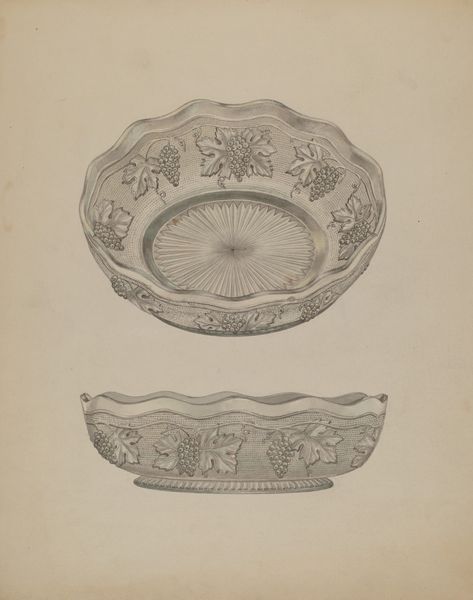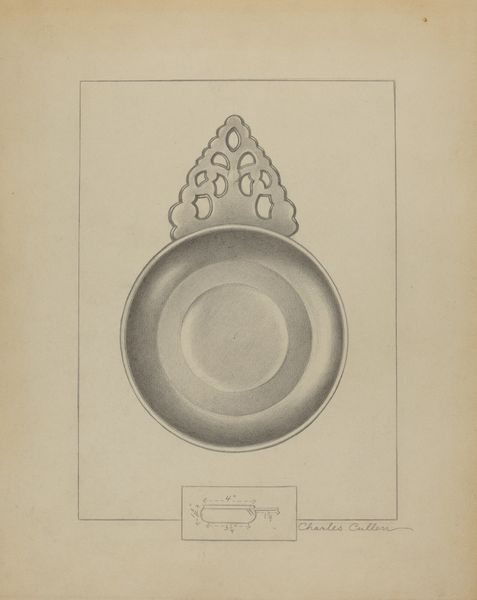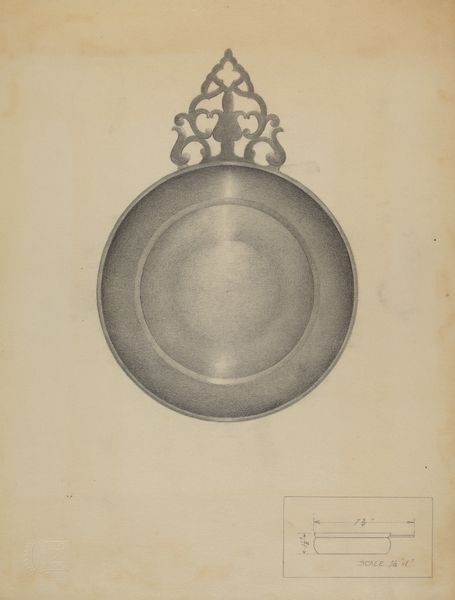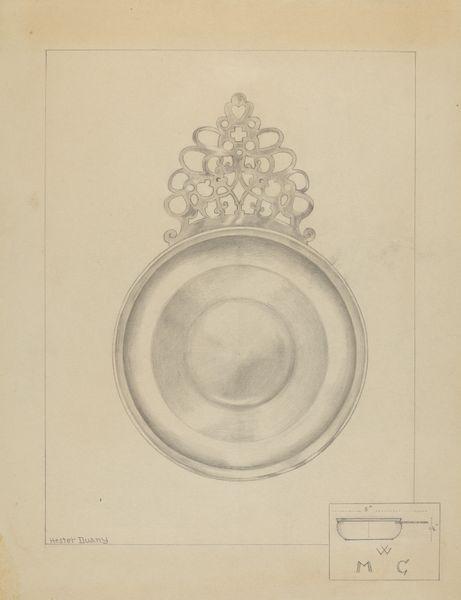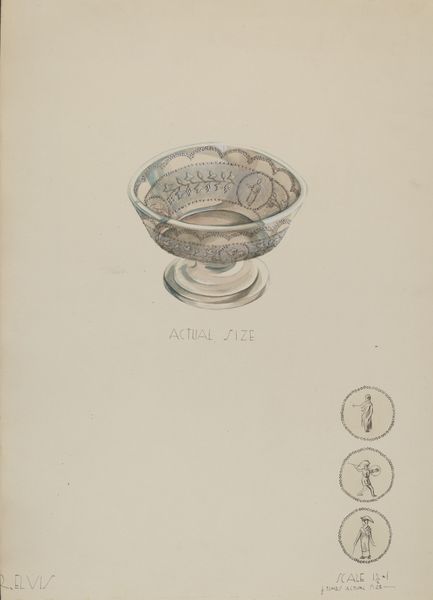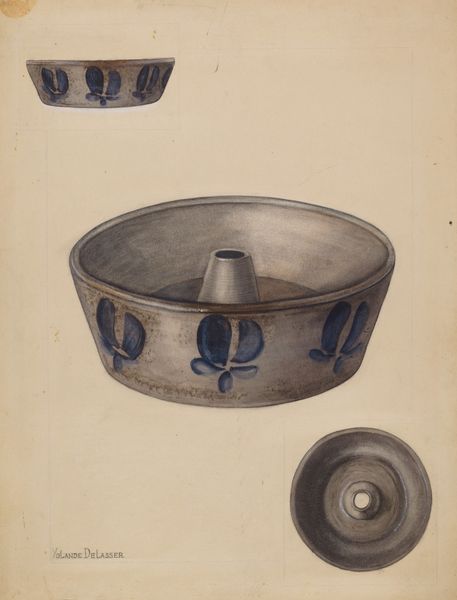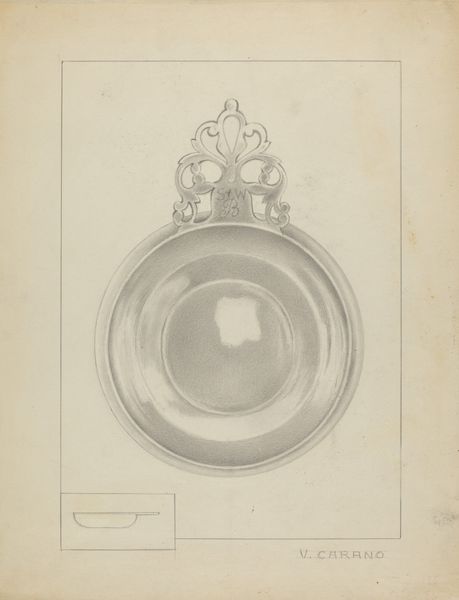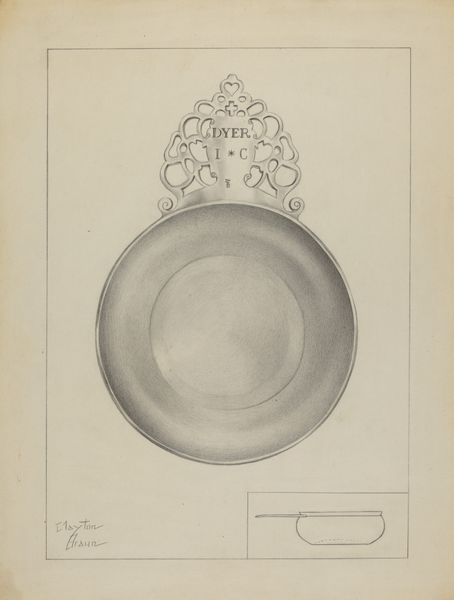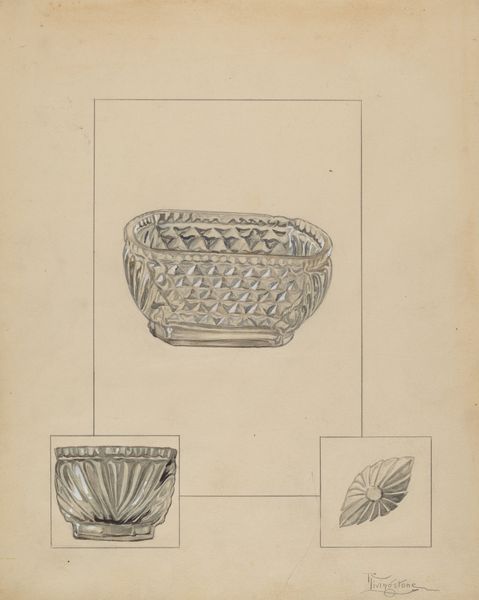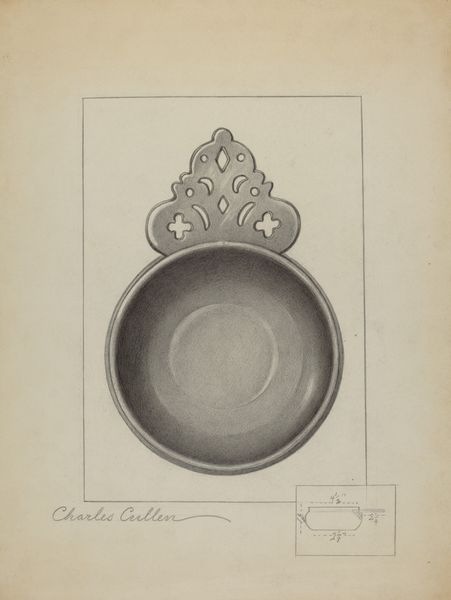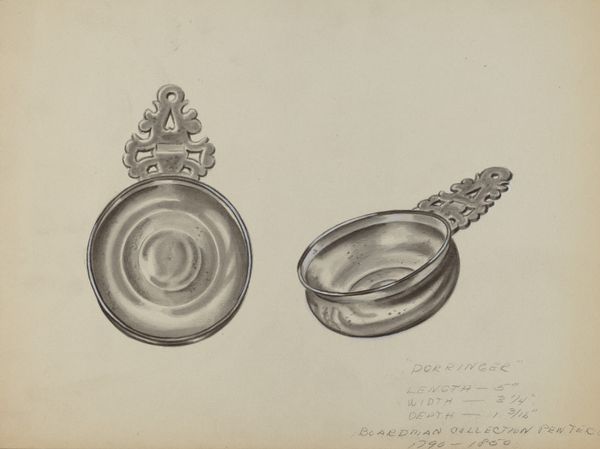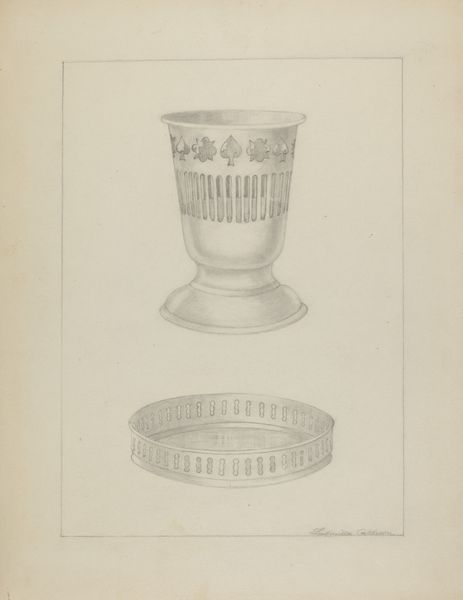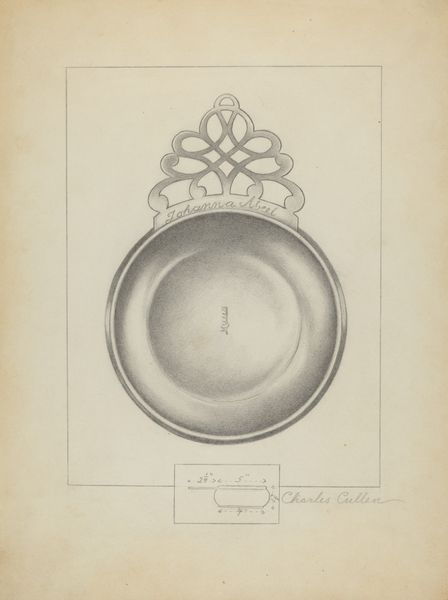
drawing, pencil
#
drawing
#
pencil drawing
#
geometric
#
pencil
Dimensions: overall: 30.5 x 24.4 cm (12 x 9 5/8 in.)
Copyright: National Gallery of Art: CC0 1.0
Curator: This drawing, titled "Bowl," dates from around 1936, by Roberta Elvis. It's a pencil drawing that depicts, well, a bowl, alongside design schematics. I find it quite delicate. What strikes you about it? Editor: It's the combination of the very simple medium—pencil—and the intricate design. The bowl looks almost…precious. I'm interested in what makes this drawing visually interesting and what principles are at play. How do you interpret this work through a formal lens? Curator: Firstly, observe how the artist uses line. Thin, delicate lines create a sense of fragility, while darker, more deliberate lines define the form and provide structure. The composition itself, divided into three distinct sections – the 'actual size' depiction, the 'pattern,' and the 'section' view - is crucial. Consider this arrangement: Does it draw your eye to a particular point or create a visual hierarchy? Editor: I notice how the soft shading in the "actual size" image makes the bowl seem rounded and three-dimensional. It contrasts nicely with the sharper, flatter lines of the "pattern" and "section" views, which seem more abstract. It makes the overall piece more compelling than any of the individual elements. What about the repeated motifs and geometric shapes? Curator: The repetitive nature of the paisley-like motif adorning the bowl creates a sense of rhythm and order. This repetition encourages us to appreciate the subtlety of each individual shape. Ask yourself how it interacts with the more obviously geometric section shown below? Does that disrupt the feeling of 'preciousness' you described? Editor: Yes, actually, I see what you mean. The geometrical forms seem to hold it together. I had not thought about it that way! I really appreciate your insights into how the formal elements of drawing shape our interpretation of Roberta Elvis’ work.
Comments
No comments
Be the first to comment and join the conversation on the ultimate creative platform.
